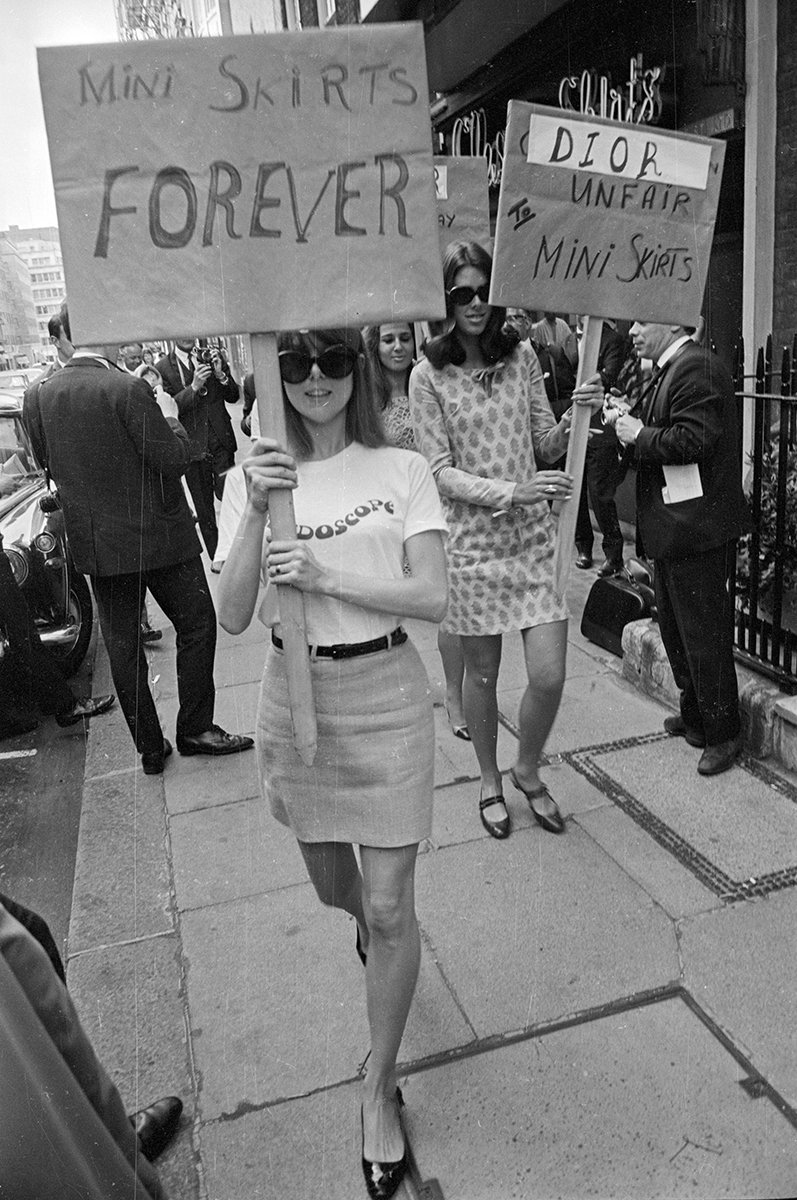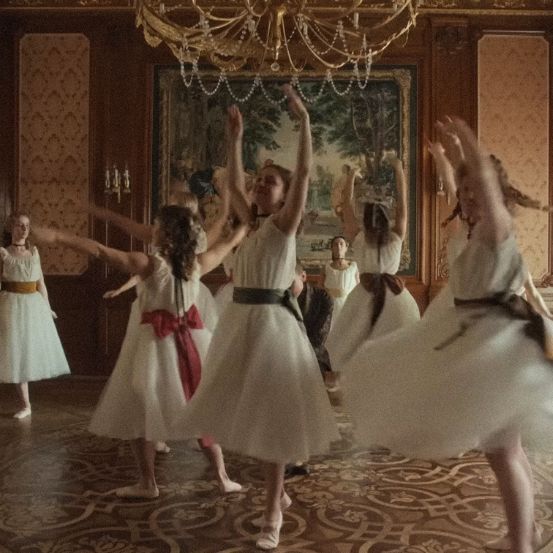Since its invention in the 1960s, the miniskirt has been one of the most relevant pieces of clothing in fashion. But beyond its undeniable aesthetic value, it also has a political worth. When it comes to skirts, the shorter the length, the bigger the revolution.
Since its invention in the 1960s, the miniskirt has been one of the most relevant pieces of clothing in fashion. But beyond its undeniable aesthetic value, it also has a political worth. When it comes to skirts, the shorter the length, the bigger the revolution.

Tuesday, September 6, 1966: the day was chosen by Dior to show its British customers its fall/winter collection. An expectable group gathers at the doors of Maison's store. Customers, journalists, and buyers were prepared to be amazed by the French brand's proposals. However, among these, an unusual crowd of women gathers, shouting and carrying placards that read "Miniskirts forever!" This group of women belonged to the British Society for the Protection of Mini Skirts - we can't think of a more fitting name. If inside the Dior store, there were proposals where the skirts fell sensibly below the knee. The demonstrators displayed the miniskirts they were fighting for. Their placards emphasized their message. "Dior, don't betray mini skirt." This small protest is just the tip of the iceberg. The mini skirt is, in fact, the catalyst for a real revolution.
What Marc Bohan, Christian Dior's creative director at the time, didn't know was that upon entering London, skirts that fell below the knee were symbols of anti-feminist oppression. The British capital in the 1960s was a den of revolution. The result of the empowerment of the post-war generation of young women. Eager to distance themselves from the classic silhouettes of their mothers, women of the time sought clothes that would prove their youth. This thirst was visible; London's streets were filled with teenage girls in their altered garments. The originality of the generation quickly influenced a whole group of emerging designers. Some of them were able to synthesize the atmosphere that surrounded them. Such was the case with Mary Quant: often credited with inventing the miniskirt. The British designer led the revolution in the way youth dressed. Her name is marked in feminist history, sometimes by inexplicable coincidences, such as the year her most popular store opened the same year the pill became available in the UK.
In 1962, the designer debuted her first miniskirt. Whether it was Quant who invented the piece is a mystery that still haunts fashion historians. Some place credit for the invention of the miniskirt on the other side of the English Channel. In Paris, André Courrèges claimed that it was his idea to raise the hem of the skirt above the knee. Like Quant, the French designer was inspired by a new generation of rebels. Regardless of which side we find ourselves on, Mary Quant solved the dilemma when she declared, "It wasn't me or Courrèges who invented the miniskirt - it was the girls walking the streets." Like the women who wore them, miniskirts belonged to no one. From Europe in the 1960s, the miniskirt quickly spread globally as a symbol of feminism. Perhaps inspired by the British Society for the Protection of Mini Skirts, the effervescent second wave of feminism saw the garment as a uniform. American activists like Gloria Steinem normalized the miniskirt at marches in which they fought for women's rights. But its popularity was not limited to Washington D.C., its adoration reached the sunny streets of Hollywood. In 1968, Jane Fonda became Barbarella, the space adventurer with the shortest skirt on this side of the Milky Way. Since then, the love affair between the seventh art and the miniskirt has not slowed. It is the protagonist of some of cinema's most iconic moments. Think of Fatal Instinct (1992), where Sharon Stone's seemingly innocent skirt creates one of the sexiest moments ever.
Off-screen, the miniskirt was integrated into society, and from the 1980s on, its association with youth faded. As women entered the workforce, skirts above the knee became appropriate options for going into the office. That is, as long as they were accompanied by blazers whose shoulders verged on the ridiculous. When António Variações sang, "I'm only happy where I'm not," he might as well have been singing about the Fashion industry. After almost 30 years of trying to integrate the miniskirt into the everyday dress, the opposite movement began. When the new millennium arrived, the shocking effect of the miniskirt resurfaced. The rule was simple: the shorter, the better. "Skirts should be the size of a belt," is how Paris Hilton, the unquestioned icon of the first decade of the 21st century, describes the mantra. Miuccia Prada certainly listened to the socialite for Miu Miu's Spring/Summer 2022 collection, where she debuted the Italian brand's celebrated mini (or rather micro) skirts.
Regardless of how mini you cut the skirt, its political edge has never waned. Even though it has evolved greatly over the six decades since its invention, the miniskirt remains a highly politicized garment. Since its birth, there have been those who, rather than seeing the miniskirt as a symbol of feminist emancipation, see obscene "provocation." When first introduced, the miniskirt was banned in many countries and publicly challenged in others. Even Coco Chanel described the garment as "simply horrible." Even though we would like to confine these issues to the past, the miniskirt remains controversial. From rhetorics that seek to justify sexist harassment to unacceptable catcalling, the miniskirt continues to reflect the sins of our patriarchal society. The right to wear this piece of clothing was fought for. Many were the legs that had to be exposed to the cold air to normalize the wearing of the miniskirt. We repeat the words of the brave women of the past, "Miniskirts forever!"
Originally translated from The Revolution Issue, published April 2023.Full stories and credits on the print issue.
Most popular

Relacionados
.jpg)






.png)